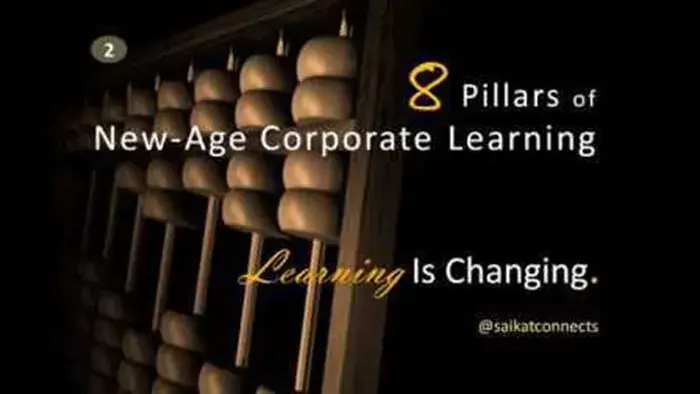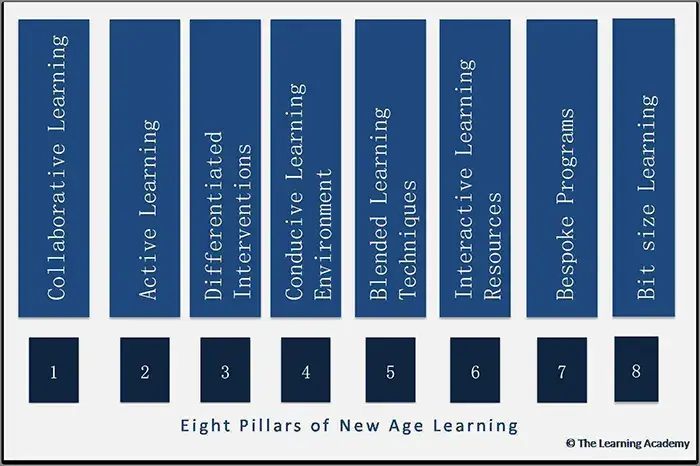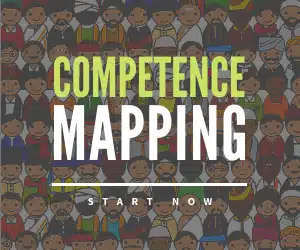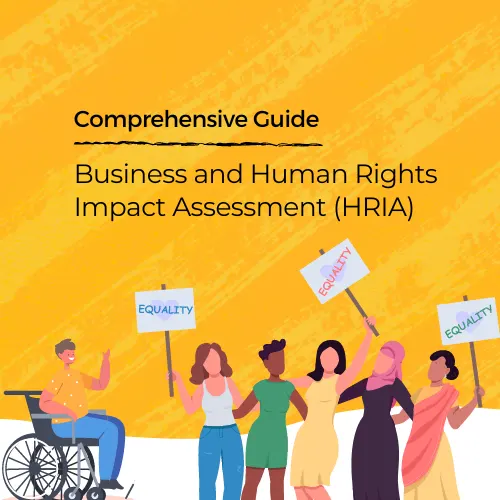People learn from the shared experiences and ideas of others. Personalisation of the learning experience should be highlighted. Favourable learning environment depends on well designing and planning.
Travelling from the “forced to attend” corporate learning programmes, we have now reached the time to learn with flexibility. While revamping the accelerated learning techniques along with the apt technology bring the refreshing aura in the learning segment.
Is this the bandwagon? Oh no, this is the basic nature of environment – Change.
It’s time to buckle up for the new-age corporate learning!
My team have worked on this change in the trend of the corporate learning and the ways to outperform in this new structure. It would be more than a pleasure to share our thought process.
Let me illustrate these a bit (yes, because bit-learning grasps the best).
We were mostly used to learn through individual-based courses & activities. With the introduction of new technologies, however, learning has shifted from an almost individual-only endeavour to a collaborative activity.
In collaborative learning, two or more people learn or attempt to learn something together. Courses serve the best when it involves incorporated problem-based discussions, reflection and other ways to make the participants an active part in the learning process.
Collaboration is no longer considered as a nice add-on; it has become a necessary feature. People are learning, not simply with others, but from the shared experiences and ideas of others.
Active learning is also called brain-based learning. It is a participant-centred learning process which is contrary to trainer-centred passive learning.
The learners scruple to be only content-receptors, merely taking down notes or listening to trainers talk for hours without pause. They possibly have a distinct set of expectations when it comes to learning. Learners actually want to take part or to have a say and keep up a sense of control over their lessons. They still turn to their trainers but only to seek guidance. That’s exactly what the outmoded passive activities turn up- another significant role of the trainers as guides.
is also called brain-based learning. It is a participant-centred learning process which is contrary to trainer-centred passive learning.
The learners scruple to be only content-receptors, merely taking down notes or listening to trainers talk for hours without pause. They possibly have a distinct set of expectations when it comes to learning. Learners actually want to take part or to have a say and keep up a sense of control over their lessons. They still turn to their trainers but only to seek guidance. That’s exactly what the outmoded passive activities turn up- another significant role of the trainers as guides.

Personalisation of the learning experience should be highlighted. Learners within any single training program are likely to have multiple needs to fulfil and not all of them aim towards the same learning goal. Each of them has their own set of concerns, agendas, abilities, values and priorities.
This is why it is extremely crucial to apply different types of interventions to different learners. No single method can accommodate all their learning needs and styles. A flexible and personalised approach to content delivery is a must for every such training program. In fact, a hybrid of self-study, individualised instruction and group activities have been proven effective time and again.
In a typical old-school corporate learning program, it was experienced that all ‘have to’ learn. Many times, the trainer perceives the participating executives as high-school children. This, unfortunately, does not consider the fact that the compulsory learning environment is not conducive to adult learning pedagogy.

Studies have shown that using different types of learning techniques improve an individual’s engagement with the topic, retention of information and overall satisfaction. Offering a variety of content, delivery methods and further resources makes the learning experience richer and ensures the best possible outcome.
Examples include supporting a face-to-face training programme with e-learning modules, action learning sets or discussion forums. Emerging new modes like e-learning, mobile-learning, and gaming are adding flavours to blended learning techniques.
Gone are the days when the print out of the slides was used as participant reference material. Each slide had a lot of information and was enough to create fear psychosis to the participant.
In addition to the core face-to-face delivery, providing other resources like Participant Manuals, FAQ Guides, hints, tips and fact sheets to support the learning may prove beneficial.
There is an earnest need to design each in-organisation course suitable to the workforce, keeping one’s learning objective in view.
In contrary, the standardised courses have their own limitations – many times the participants do not find relevance to the course content and their learning objectives.
Bearing in mind the short span of human attention, the bit-size learning approach is reshaping the learning behaviour pattern. The chunking method helps to grasp information in short periods of time and accordingly learning is applied successfully in the workplace. Such crisp and apt learning motivate to focus on the key concepts and techniques.
“Learning is not compulsory… neither is survival” ― W. Edwards Deming
Individual goals and organisational objectives, ultimately, are complementary to each other.
Consultivo’s featured solution
Competency Mapping & Management
Competency management provides the foundation to manage strategic talent management practices such as workforce planning, acquiring top talent, and developing employees to optimise their strengths.
Credit: This blog was originally posted on Linkedin Pulse by Saikat Basu, CEO & Chief Mentor, Consultivo.
Share this post
Category: Blog
About the author
CEO at Consultivo
Saikat Basu is a long time sustainability and risk management professional and entrepreneur. He is having a diversified exposure to various management practices in the areas of strategic leadership, organisation excellence, financial management and people engagement. He has worked intensively with 200+ national and international standards on responsible business. He is a member of several sustainability (SHE Award, Environmental Excellence, Social Impact) award program design & jury committee. He is a passionate blogger and visiting faculty in academics.
Related insights
Blogs
Blogs
Blogs
Blogs
Knowledge Bank
Blogs
View more in Impact Stories | Blogs | Knowledge Bank | News and Events










